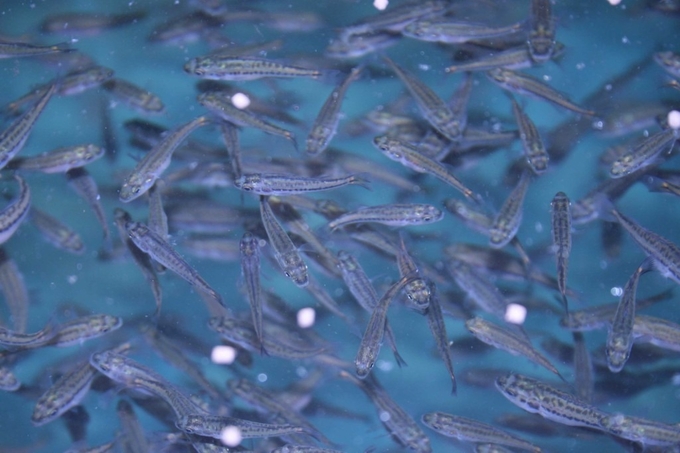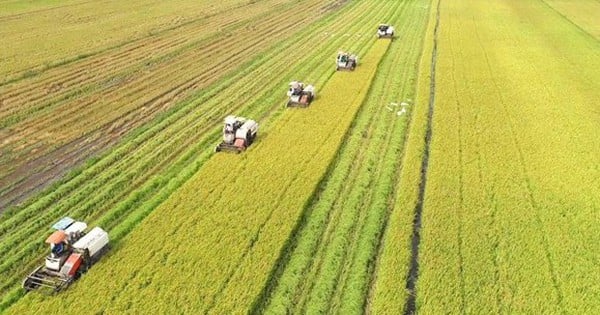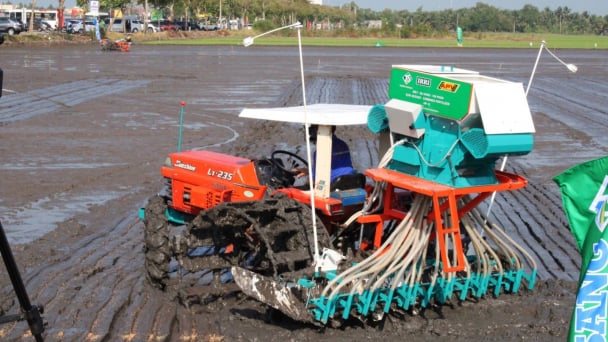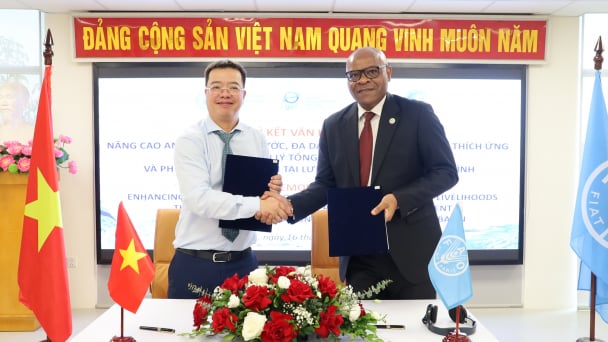May 20, 2025 | 13:54 GMT +7
May 20, 2025 | 13:54 GMT +7
Hotline: 0913.378.918
May 20, 2025 | 13:54 GMT +7
Hotline: 0913.378.918

The Asia-Pacific animal biotechnology market is forecast to reach US$12 billion by 2030. Source: Precedence Research.
According to Precedence Research, the Asia-Pacific animal biotechnology market is anticipated to reach USD 12 billion by 2030, making it one of the fastest-growing regions in this field. Countries with rapidly advancing economies, such as India, China, and those in Southeast Asia, are seeing rising demand for premium animal products and more sophisticated veterinary services.
The Asia-Pacific animal biotechnology market, valued at USD 5.5 billion in 2022, is projected to exceed USD 12 billion by 2030, with a compound annual growth rate (CAGR) of over 10%. Among market segments, vaccines are expected to lead in revenue generation by 2022, driven by the increasing prevalence and complexity of animal diseases.
“Vietnam can take pride in its achievements in producing vaccines to prevent and control livestock diseases, thanks to our strong foundation in science and technology,” said Dr. Nguyen Van Long, Director of the Department of Animal Health, during the forum "Achievements and Directions for Biotechnology Application in Sustainable Agricultural Development amid Global Integration" on October 5.
Dr. Long highlighted key vaccines, including those for avian influenza, African swine fever, and products aimed at combating drug resistance.
He also noted that animal diseases fall into two categories: those affecting livestock alone and zoonotic diseases, which can spread to humans. Recently, complex viral strains have emerged, causing, for example, influenza A(H5) in tigers in Dong Nai and disease outbreaks among dairy cows in Lam Dong.
As the veterinary sector is continually exposed to new pathogens, Vietnam must prioritize the importation of advanced biotechnology products. Furthermore, with Vietnam being a major market for animal products, the veterinary system requires high-tech solutions capable of early diagnosis and remote prevention, especially for newly emerging diseases.

The veterinary industry needs to promote the import of new biotechnology products from abroad.
Director Nguyen Van Long raised several issues, emphasizing the importance of mechanisms and policies to support biotechnology development.
"Submitting a technology project under the State framework takes considerable time, which risks stagnating Vietnam's foundational research," he remarked, advocating for an open model that brings together management agencies, scientists, and businesses. This collaborative approach, he suggested, would help quickly transition research into practical applications, rather than shelving it.
In the veterinary field, Mr. Long emphasized the importance of international cooperation. Advanced biotechnology techniques are crucial to the veterinary sector, and the industry strives to incorporate new advancements as promptly as possible.
In Vietnam, the application of biotechnology in animal science has led to significant achievements, from enhancing livestock productivity to preserving valuable genetic resources.
Dr. Nguyen Khanh Van, Director of the Key Laboratory of Animal Cell Technology at the National Institute of Animal Science, discussed recent successes in gene regeneration for livestock.
However, Dr. Van highlighted challenges faced by researchers in the livestock biotechnology sector. “We have successfully developed PRRS-resistant pig embryos, but the research has only reached the embryo creation phase due to limited facilities and qualified farms for subsequent steps. This limitation has hindered practical application,” she explained.
Another challenge is that after successfully cultivating pig embryos, the National Institute of Animal Science lacks clear guidance on managing and caring for the breeding stock, particularly post-project. This lack of clarity regarding the storage and handling of breeding stock has posed significant obstacles to maintaining and advancing research on livestock breeds.

Biotechnology to preserve livestock genetic resources is a potential and necessary direction. Photo: HT.
Dr. Nguyen Khanh Van compared that in the field of cultivation, after completing research topics, seeds are often preserved in laboratory warehouses to serve future research. However, the field of animal science requires a more specific mechanism, because the storage and preservation of breeds is much more complicated.
Ms. Van suggested that using biotechnology to preserve the genetic resources of livestock is a potential and necessary direction. “We can use that genetic material to restore the herd, ensuring not only maintaining high-quality livestock breeds but also contributing to improving the efficiency of livestock farming in the future,” Dr. Van emphasized.
In the aquaculture industry, Associate Professor Dr. Dang Thi Lua, Director of the Aquaculture Research Institute, highlighted the extensive use of biotechnology, especially modern techniques like molecular genetics, aquaculture species breeding, disease research, diagnostic kit development, tissue research, storage technology, sperm cryopreservation, and aquatic product processing.
Vietnam has adopted advanced gene sequencing and molecular markers to identify and assess the genetic diversity of aquatic species and select foundational material for conservation and breeding. However, Dr. Lua expressed concern about the lack of continuity in breeding research, which hampers timely application, particularly in species like tilapia and carp.

The Aquaculture Research Institute is hopeful for a framework that will strengthen international collaboration in advancing biotechnology applications. Photo: Aquaculture Magazine.
To address these challenges, the Aquaculture Research Institute's leaders are advocating for mechanisms that foster international cooperation in biotechnology applications in aquaculture.
Dr. Lua also cited notable achievements in aquaculture biotechnology. Various aquaculture species now exhibit superior traits through breeding programs that combine traditional quantitative and modern molecular genetics. These advancements include faster-growing pangasius, sea bass, tilapia, and white-leg shrimp; pangasius resistant to liver and kidney diseases; salt- and cold-tolerant tilapia; and disease-resistant white-leg shrimp.
The global animal biotechnology market size is estimated to reach nearly US$ 29 billion by 2024 and is expected to reach around US$ 70 billion by 2034. The market is expanding at a steady compound annual growth rate (CAGR) of 9.2% during the forecast period from 2024 to 2034.
Translated by Quynh Chi

(VAN) In 2024, over 295 million people across 53 countries and territories faced acute hunger—an increase of almost 14 million people compared to 2023, while the number of people facing catastrophic levels of hunger reached a record high.

(VAN) World Environment Day 2025 (June 5) carries the theme 'Beat Plastic Pollution' continuing to emphasize the global urgency of addressing the plastic waste crisis.

(VAN) This was the assessment shared by experts at the workshop titled 'Assessing the Role and Potential of Low-Emission Rice Production Systems in Vietnam,' held on the morning of May 19.

(VAN) Cai Rong Port is the fisheries control center of Quang Ninh, helping to monitor fishing vessels, combat IUU fishing, and remove the EC's 'yellow card'.

(VAN) The German Agricultural Society (DLG) explores the possibility of establishing a mechanization service center in Vietnam’s Mekong Delta to support farmers in accessing and utilizing advanced machinery.

(VAN) On May 16, the Department of Water Resources Management, in collaboration with the Food and Agriculture Organization of the United Nations (FAO), held a signing ceremony for the GEF-8 project document.

(VAN) Food safety, mechanization, vocational training, and market opening are key areas of cooperation expected between the Vietnamese Government and the Federal Republic of Germany.